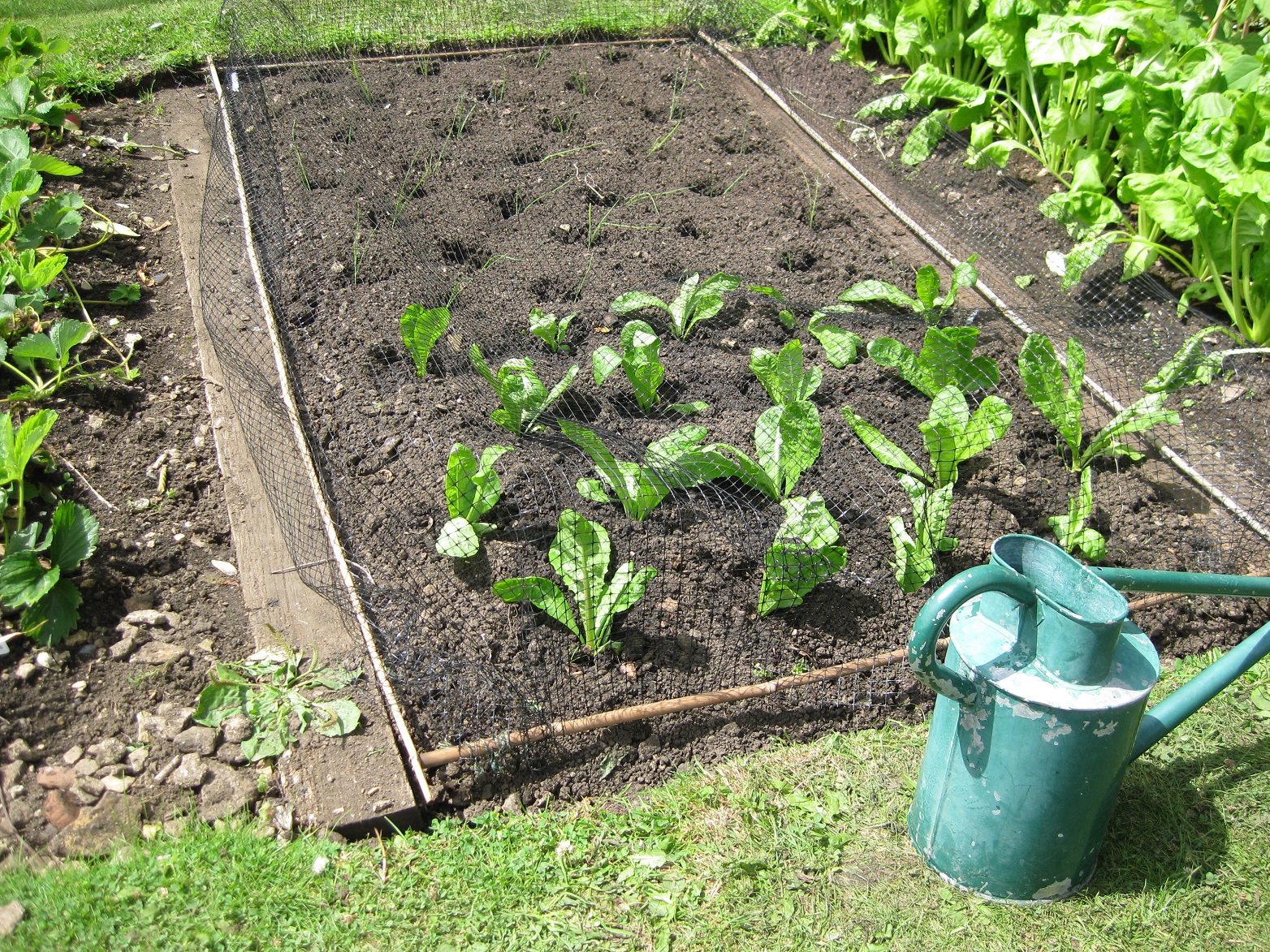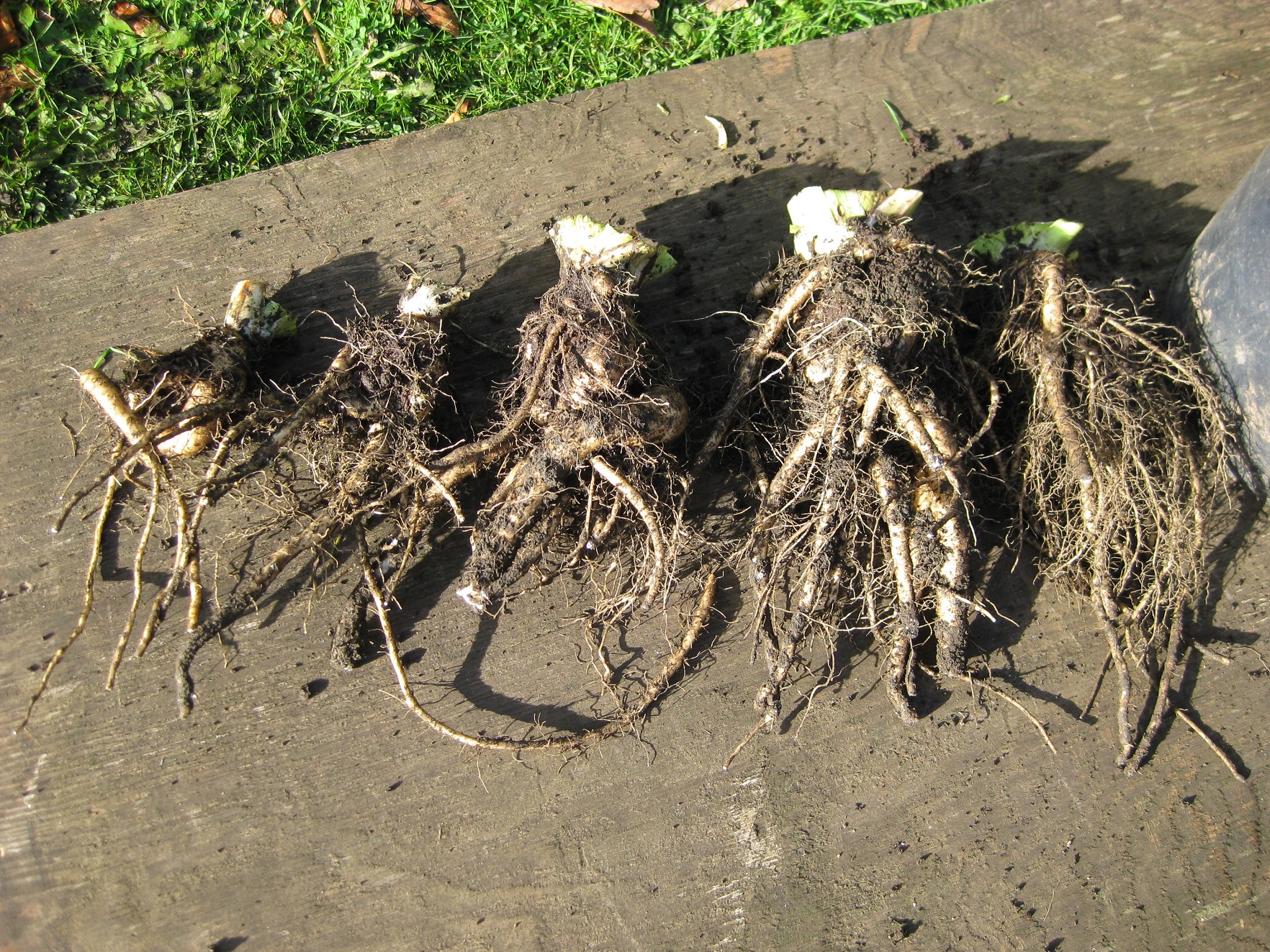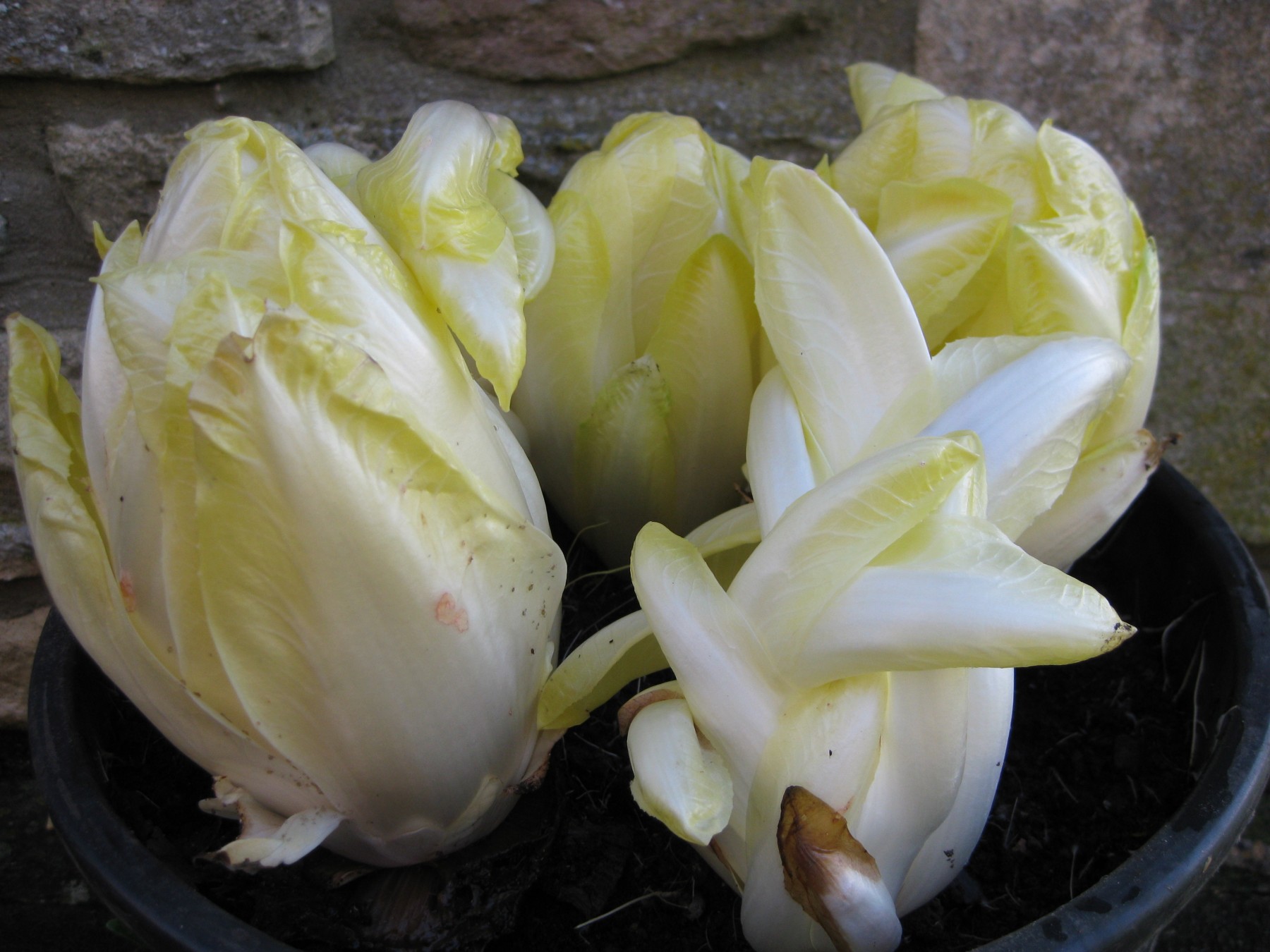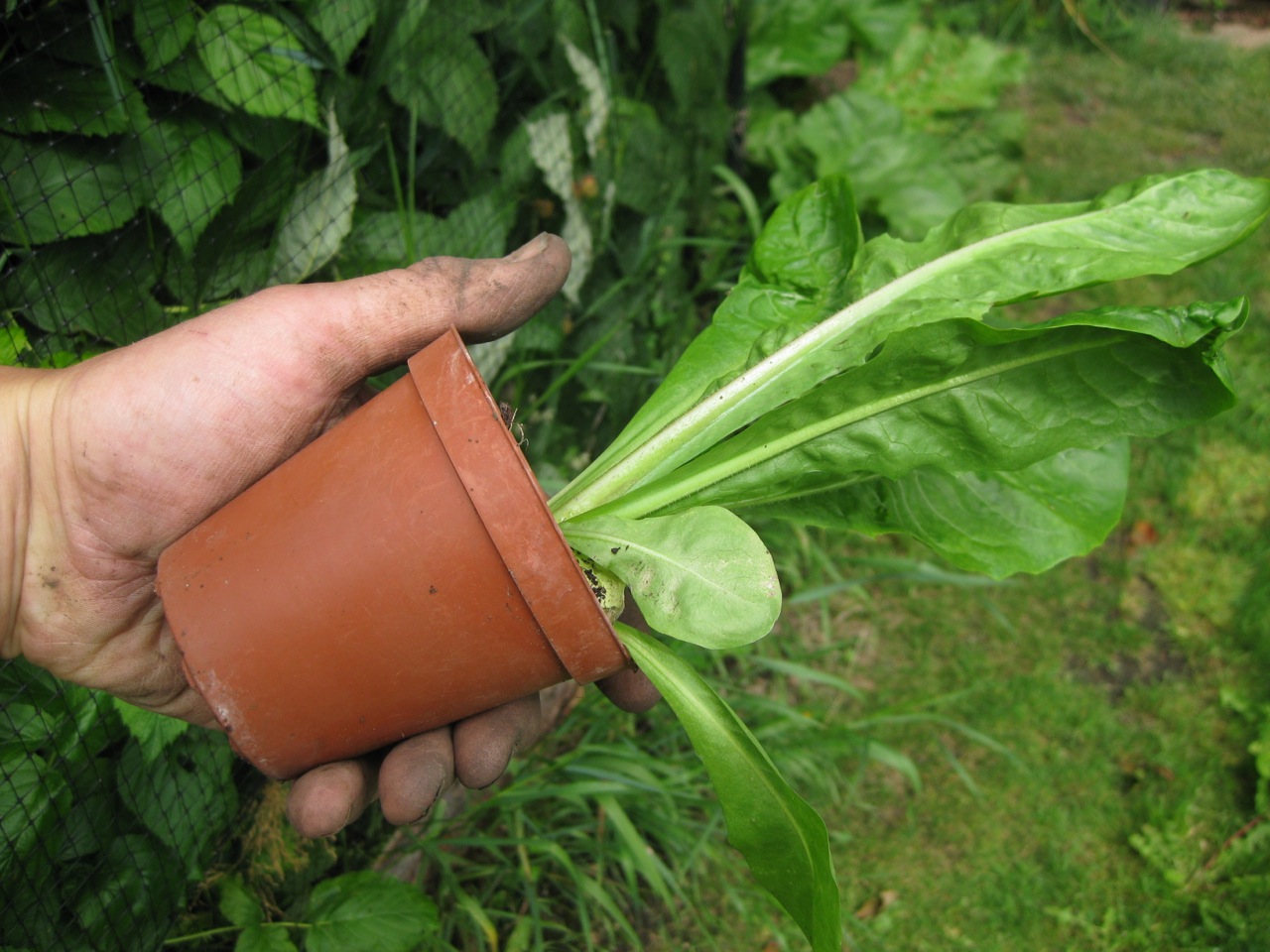
It’s very tempting to have an empty greenhouse during winter, but there are things you can grow. For many years now I’ve been taking the tomatoes out of one greenhouse, having a quick tidy up and popping winter salads in. It all began when I read that bagged salads might have been washed in diluted bleach, circa 2005, and suddenly those expensive little bags didn’t seem quite such a good idea. And what began as a concern about health quickly proved to be easy to do and kind on the pocket. Our winter salads save us more money than anything else and I’m a Yorkshire girl bent on thrift – except for shoes of course!
The seeds are sown in September and then pricked out into trays and then transferred, in rows, to the greenhouse. They develop slowly and then they can be snipped and cut through the year. They are all cold tolerant salad leaves although there is a frost-breaking heater in the greenhouse that cuts in and I do fleece the leaves in exceptionally cold weather.

We grow about ten different things and some of them are mixtures of oriental vegetables. Thompson & Morgan do Niche Mixed and this consists of Mustards such as Golden Streaked and Red, Komatsuna, Mizuna and Sky Rocket. Mustard leaves are hot, but mizuna is almost fern-like in leaf and komatsuna resembles small-leaved spinach. Both are subspecies of the turnip and they add great flavour and texture and they look pretty on the plate.
The biggest winter surprise was Rocket ‘Apollo’ from Thompson & Morgan because this does really well over winter, growing slowly without getting any flea beetle. In summer flea beetles and bolting mean that my plants race into flower with barely a leaf gathered. But in winter fresh, tender leaves linger, staying just the right size, and they are delightfully peppery.
Some Italian vegetables are also good in cool climates and leafy radicchio ( or red chicory) ‘Treviso’, the endive ‘Bionda a Cuore Pieno’ and chicory ‘Grumolo Verdi’ come from Franchi Seeds who have a superb range. The endive grows at the same speed as an all-year-round Cos lettuce called ‘Pinares’ ( from Mr Fothergill’s’s) and I’m harvesting small leaves of both. However the chicories are very slow, not helped by ‘Grumolo Verdi’ being the slugs’ preferred nibble. Our slug control is organic and simple and consists upturned plant saucers. These are checked every morning, although and most damage occurs on winter lettuces and endives.

We also enjoy blanched chicory, although this is grown in the vegetable garden and forced in cold dark places. You need to start with Witloof chicory seeds, so named because the process of blanching was accidentally discovered by a farmer in Witloof in Belgium in 1830. in those days chicory roots were used as a cheaper coffee substitute and grown quite widely. The farmer was storing harvested roots in a cellar before selling them on when he noticed the new white leaves. He tasted them and found them moist, crunchy and slightly bitter. A horticulturist from Brussels Botanical Garden refined the forcing process and ‘chicons’ were first sold in Brussels market in 1846. However forced chicory did not become widely eaten until the 1920s and 30s and it’s still much more popular on the continent than here.
Witloof chicory seeds needs to be sown in late April or May and I find it easier to prick them out into pots and then put them in the garden once the roots fill the pots. Each rosette should be six inches ( 15 cm) apart and this encourages long, slender tap roots that look similar to dandelion roots.

The roots are lifted from early November onwards and all the foliage is cut back to within an inch of the roots and the sheared plants are stored somewhere cool. Then batches of four and five at at time are potted up into a large black plant pot or bucket. Then the plants in the bucket are covered with another black plastic bucket to exclude the light. The chicons need temperatures of 50 F / 10 C and this produces large, pale buds about six inches high in four weeks or so. Then it’s time to eat them raw or cooked.
The chicory leaves are crisp and crunchy, but the inner leaves are much sweeter than the outer ones. However they get more bitter when they’re cooked and this bitter flavour works well with chicken. Nigel Slater has a very good recipe using chicken thighs, white wine and crème fraîche. You need two white chicons, cut in half lengthways and cooked cut side down so that the undersides colour over a moderate heat. As the chicory cooks, turn and lightly brown the other side. When the leaves are soft and a pale gold in colour, 2 tbsp of soft honey is dribbled into the pan followed by 1 tbsp of grain mustard. The honey definitely counteracts any bitterness and adds a golden colour.











